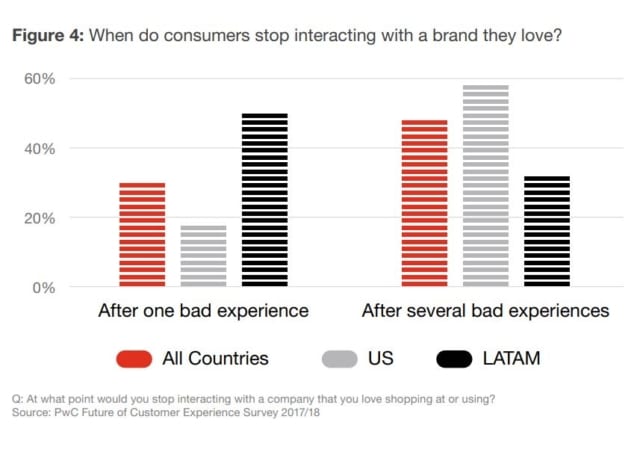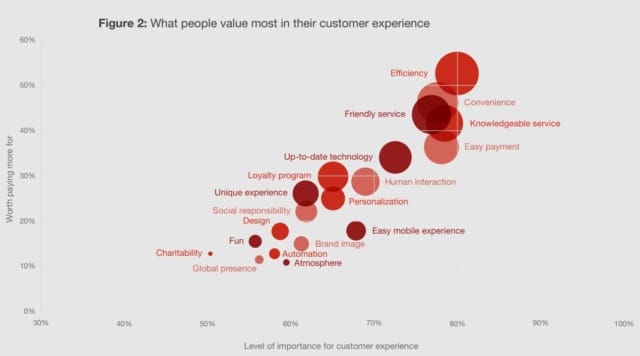The terms customer support and customer service are often used interchangeably. In fact, a quick Google search for “customer support” or related queries brings up almost exclusively articles dedicated to customer service.
Customer support and customer service are actually distinctly different areas – though there is some interplay between both. Both have a hand in customer retention rates and the reduction of churn, and both have their origins in call centres but are increasingly using more modern technology like live chat support and social media.
Knowing the key differences can help you to implement great practices in both areas, and improve your customer relationships as a result.
What Is Customer Support?
Customer support is a key facet of great customer experience. It addresses the more technical problems that arise for customers, rather than their overall journey.
Essentially, customer support agents are dedicated to troubleshooting on behalf of customers. Strong customer support is much more common in businesses in the SaaS sphere or where products are particularly complicated to use – IT is the classic we’ve all called on for assistance at some point in our lives.
It’s not just tech industries where customer support can be helpful, though. Technical problems can include difficulty navigating a site or putting together a particularly fiddly bedside table.
Having tried to solve the problem themselves, customers turn to the company – and that’s where customer support comes in And they come in well.Customer support teams guide customers through processes, whether that’s finding a particular product on-site or providing advice on how to look after a newly-purchased product.
This does of course involve some customer service skills – your support teams are still at the forefront of customer interaction, after all.
Although, there’s another key facet to customer support that takes it away from customer service as a whole: the involvement in product development.
Customer support teams are often integral parts of product teams: they can provide crucial feedback on where customers are stumbling, retail or otherwise. This can lead to enhanced usability as the company takes action to make the customer experience smoother. Updated FAQs, clearer instruction booklets, or more comprehensive onboarding processes for new customers are all ways in which a brand can tackle issues, repeatedly.

A Brief History of Customer Support
It feels like an integral part of the customer experience, especially when it comes to ecommerce. Customer support hasn’t always been around – but it has its origins earlier than you might expect. Customers have been around before commerce.
The 1760s: Josiah Wedgewood, the English pottery tycoon, is credited with pioneering many of the modern marketing methods we use today – including money-back guarantees.
His adoption of this strategy meant that he could send out samples of his earthenware all over Europe to wealthy potential clients. If they didn’t like it, all they had to do was get in touch. And if they did? Well, he had made a sale.
The 1876-1894 period: Alexander Graham Bell patents the electric telephone, and by 1894 customers could make use of the electromechanical automatic telephone exchange to contact companies via switchboards to ask questions.
The 1960s: Over half a century later, people were still calling companies for information, and the ’60s saw a huge increase thanks to the advance of the Private Automated Business Exchanges (PABX).
These were offices filled with customer support and customer service agents, and gradually became the call centres we know today, although it wasn’t until 1983 that the term “call centre” was coined.
The 1970s: The invention of Interactive Voice Response technology allowed businesses to direct customers through complicated phone trees with recorded messages. Once the area of their query was determined, they could be passed along to the most appropriate customer support agent.
1996: With the advent of the public internet in the early ‘90s, email and live chat support added new channels by which to contact customer support teams. At the turn of the millennium, companies began to use dedicated customer support software and modern CRM systems – most notably Salesforce and Microsoft.
2008: In the noughties, social media kicked off – and with it came a brand new channel for customer interaction. Its place in the public eye meant that it was a double opportunity for brands: they could not only provide excellent customer support but show off their customer service to other potential customers too.
2015: By 2015, it was unusual to find someone without a smartphone. As such, mobile support – including apps and mobile-friendly websites – became the norm. Dedicated brand apps play a huge part in customer success, as they can allow customers to go on a self-service journey and have the information they need at their fingertips.
Meanwhile, virtual call centres began to spring up alongside their more traditional counterparts. Customer support is still necessary for those pesky problems.

The Importance of Customer Support for Your Business
While 16% of customers would happily pay more for an excellent customer experience, plenty of brands neglect the important role that customer support plays within that figure. If customers have tried the self-service route and can’t find the answer they need, dedicated customer support can guide them from frustration to elation.
It plays a huge part in customer retention, as users remain loyal to brands they know will support them post-purchase.
On the other hand, 32% of those polled said that they would look elsewhere after just one disappointing experience with a brand they had previously loved.
When you’re expecting people to spend their hard-earned cash – especially in an age where so much of our shopping is done online – that experience could all come down to post-purchase support.
Imagine the annoyance if your brand new laptop wasn’t functioning as it should. Not only that but your attempts to contact the company have been rebuffed at every turn: a generic email here, an underwhelming and under-educated customer service agent there.
Brands can build entire reputations on their ongoing customer support – and others can lose customers by neglecting it.
How to Define Customer Support Level
There are two key ways in which you can measure your customer support level: one is to look at customer satisfaction (CSAT), and the other is to analyse churn rates. These metrics, though they can also be influenced by other aspects of the customer experience, can give you a good idea of how well your customer support is currently performing.
A CSAT score is generally collected immediately after a customer support interaction: customers are asked to score their experience on a scale and add any additional comments.
Because it refers specifically to that interaction, CSAT ratings can give you an insight into how helpful it was – and can also help to pinpoint high achievers in your customer support team.
Churn rates, on the other hand, look at how many customers your business lost over a specified period. Generally, a low churn rate is good, especially when coupled with high customer acquisition rates.
Customer churn metrics are more general, as it might well be another aspect of the business that has driven them away, rather than purely focusing on customer support. Nonetheless, if you can notice a drop in customer retention immediately following a customer support interaction, you know you need to take action.

Key features of customer support
There are several key features of customer support. The first is that the technical support provided comes from someone with a varied knowledge base. It is absolutely no use to the customer to have a customer service agent go through the same self-service template they have inevitably just tried.
Instead, a customer support agent needs to know the product or service inside out. On top of that, they should be good at problem-solving, especially as customers who have reached out to customer support are likely to have tried the self-service route already. This suggests that the issue is more complicated or unusual.
Early stages of customer support can include automation to point customers in the direction of resources that might help them to solve the problem on their own – but must be backed up by knowledgeable agents if the issue persists.
The customer’s needs should be thought of at all stages – including after the conversation when a customer service team might report ongoing problems in the customer journey to the product development or marketing teams.
Customer support vs Customer service
| Customer Support | Customer Service |
|---|---|
|
|
Customer support vs Customer service
| Customer Support | Customer Service |
|---|---|
|
|
What’s Good Customer Support?
Big and small businesses alike need outstanding customer support as a foundation of a perfect customer journey. So, what sets good customer support apart from its mediocre competition?
As with customer service, it’s important to remember that customer care is tantamount. Tech support that isn’t friendly or is too jargon-heavy isn’t helpful to vast swathes of your customer base. The support process should have customer experience at the heart of it, from the first moment of customer contact to regular meetings to determine which elements of the business are tripping customers up.
Of course, it should also be efficient. According to PwC, efficiency is the most important factor in customer experience – as well as what’s worth paying more for.
There’s not much more frustrating than being 89th in a queue whilst waiting for help. In this situation, your customer support team might benefit from some tech support themselves – though there are advantages and disadvantages to automating customer support.

Conclusion
Often overlooked, customer support can play a crucial role in customer retention and loyalty.
As well as offering help and advice directly to customers, your customer support team might suggest the need for a more accessible website, instruction manuals in other languages, or even just packaging that’s easier to open.
They’re a great way of gaining an insight into how you could make your customer’s journey smoother.
On top of that, they’re also quite often the face of the company: the last representative a customer will speak to before deciding whether it’s worth persevering with their purchase.
Customer support teams must be knowledgeable and friendly, able to translate complicated jargon into easy-to-follow steps that don’t alienate the customers or leave them more confused than before they got in touch.
Leave a lasting impression – and hopefully, it’s an impression that says: this brand cares about its customers.
Originally published Sep 02, 2021
Find out how to take your customer service to the next level.
Book a personalised demo today.

